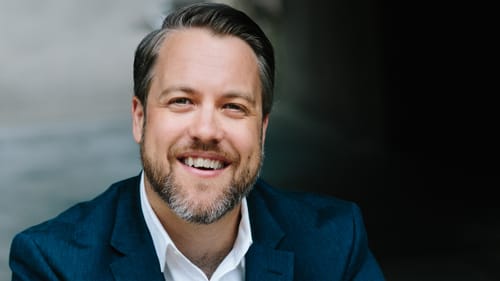Stay in the Loop
BSR publishes on a weekly schedule, with an email newsletter every Wednesday and Thursday morning. There’s no paywall, and subscribing is always free.
Welcoming Penn Live Arts
A rebrand at the Annenberg Center is true to a move beyond the building

It has been a strange year for local arts institutions. Many have seen milestone seasons with audiences locked out of theaters and celebrations put on hold. That hasn’t stopped those organizations from looking ahead. At the height of the pandemic in 2020, PHILADANCO! marked its 50th year with eyes firmly on the future: Joan Myers-Brown announced that Kim Y. Bears-Bailey would succeed her as artistic director. This year the Annenberg Center for the Arts Presents, marking its 50th year as a presenter, has changed its name to Penn Live Arts.
With a successful season that saw the series at the Annenberg Center do a fast pivot to streaming live performances from their stages in real time, it seemed like a strange moment for a change of identity. According to artistic director Christopher Gruits, roughly 53 percent of the subscriber base bought tickets for streamed performances. “For some of the larger dance streams,” he said, “we saw paid audiences in the 700 range, which is really good.”
Some of the smaller jazz shows had several hundred ticketholders, much like a live show, but viewers were engaged. They often stayed online to post questions and see artists like dancer/choreographer Hope Boykin answer them in the live Q and A sessions that followed the performances. Then, just as audiences were ready to take first tentative steps back to live performances, the arts landscape shifted.
A sensible shift
So much change has been disconcerting at a time when people crave certainty, but the shift from Annenberg Center Presents to Penn Live Arts made sense—the former name risked confusion between the hosting entity and the building. The Annenberg Center for the Performing Arts, like the Annenberg School of Communications next door, was named after a donor: “We are really fortunate to have this phenomenal three-theater complex through the generosity of Walter Annenberg back in ’69,” Gruits said. “He was the catalyst for Penn having the first performing arts center in the city.”
While the Annenberg Foundation continues to fund the Annenberg school, it does not provide funding to the arts series, although they do stay in close contact. “A lot of people assume that because we have an Annenberg name, we have a significant endowment,” Gruits explained. “We really don’t.”
As with other arts programs in the city, funding comes from many sources, including donors, but the bulk of it is what they earn. Gruits said that did not motivate the change, however.
For Gruits, the new name takes the series back to its roots: “We were Annenberg Center Presents, and before that we were Annenberg Center Live, but prior to that, really for the first 30 years, we were Penn Presents.”
The name Penn Live Arts acknowledges that history as part of the wider Penn community, where student workers outnumber permanent staff three to one, and Penn student interns learn as they work in every department. Residencies and other programming support the scholarly mission of the university.

Beyond the building
With the new name, the presenter also sheds its building-centric identity. While most performances still take place at the Annenberg Center, the series has already moved out into the community. They ended last season with Month of Moderns, open-air choral performances by The Crossing set in New Hope, Germantown, and West Philadelphia (Matana Roberts’s We Got Time, at the Woodlands Cemetery, was a profoundly moving experience). Contemporary music ensemble Alarm Will Sound opens the 2021-22 season with another outdoor experience: environmentalist composer John Luther Adams’s 10,000 Birds, based on migratory bird songs, is coming to Morris Arboretum.
Penn Live Arts won’t be celebrating its 50th right away. With the pandemic still casting its shadow, the plan is to engage audiences in the history of the series, and to really pump up the volume in the 2022-23 season, when the presenter can bring in the international artists that it’s known for around town. In the meantime, it will be presenting a wide variety of performances inside and outside the building—local favorite Zakir Hussain will be back, Rennie Harris will be premiering a new piece at the Annenberg Center, and The Crossing will be back, at Holy Trinity on Rittenhouse Square.
Whether or not it’s safe to gather in person, Gruits said they’ve got this. “If we couldn’t for whatever reason, have an audience in person, then we would shift to digital streaming. We have the equipment, we have the skill set now on staff, we have the platform online, and we have an audience that’s really been conditioned, if you will, to do this.”
For some—viewers who can’t make it to Philadelphia for a show, or who are otherwise unable to make it to the theater—streaming has been a godsend. They are clamoring for more, and Gruits promises they won’t be forgotten in the return to the theater: “We are working on that right now and yes, some of the live performances we will stream.”
Sign up for our newsletter
All of the week's new articles, all in one place. Sign up for the free weekly BSR newsletters, and don't miss a conversation.

 Camille Bacon-Smith
Camille Bacon-Smith